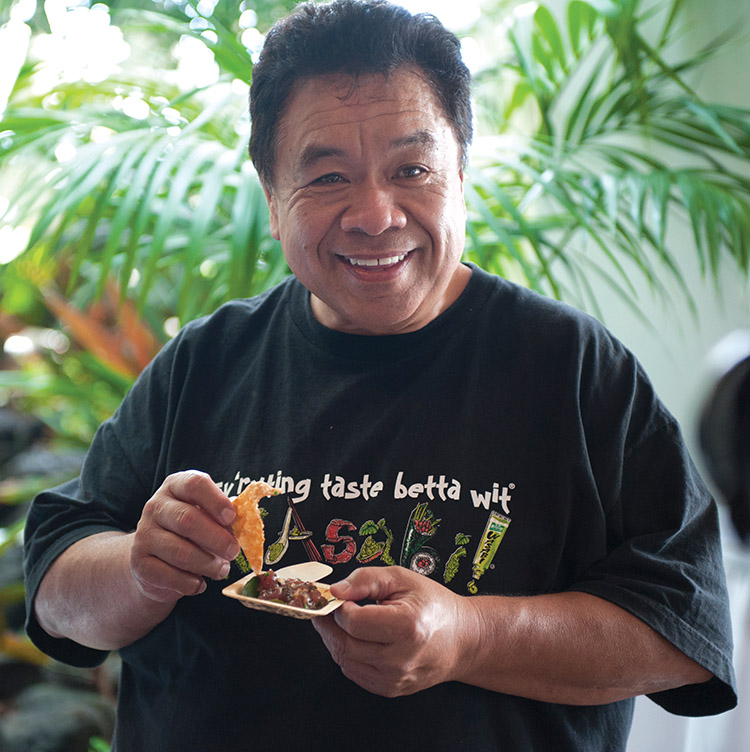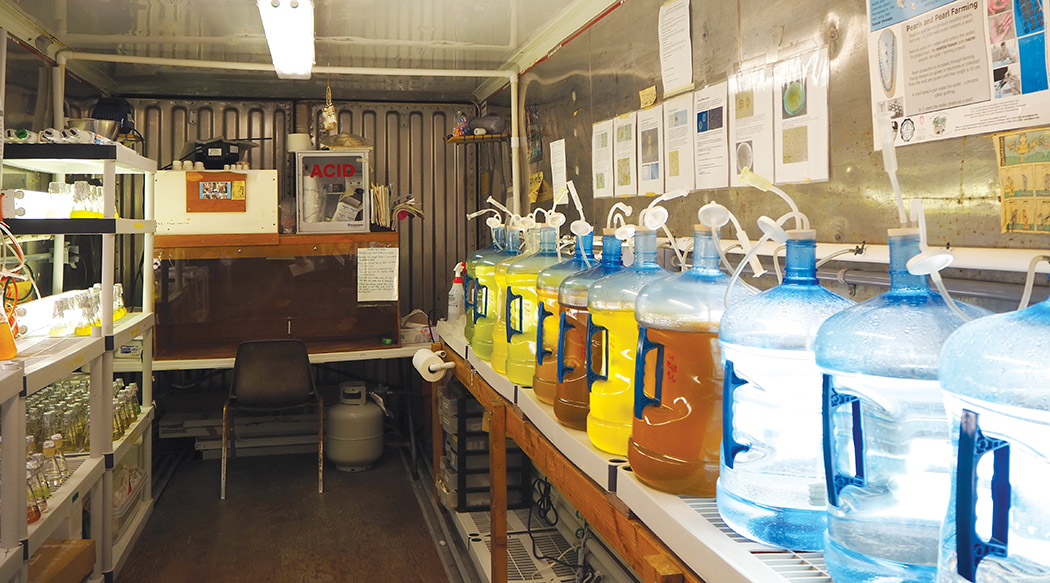
Diving into the World at Pacific Aquaculture and Coastal Resource Center
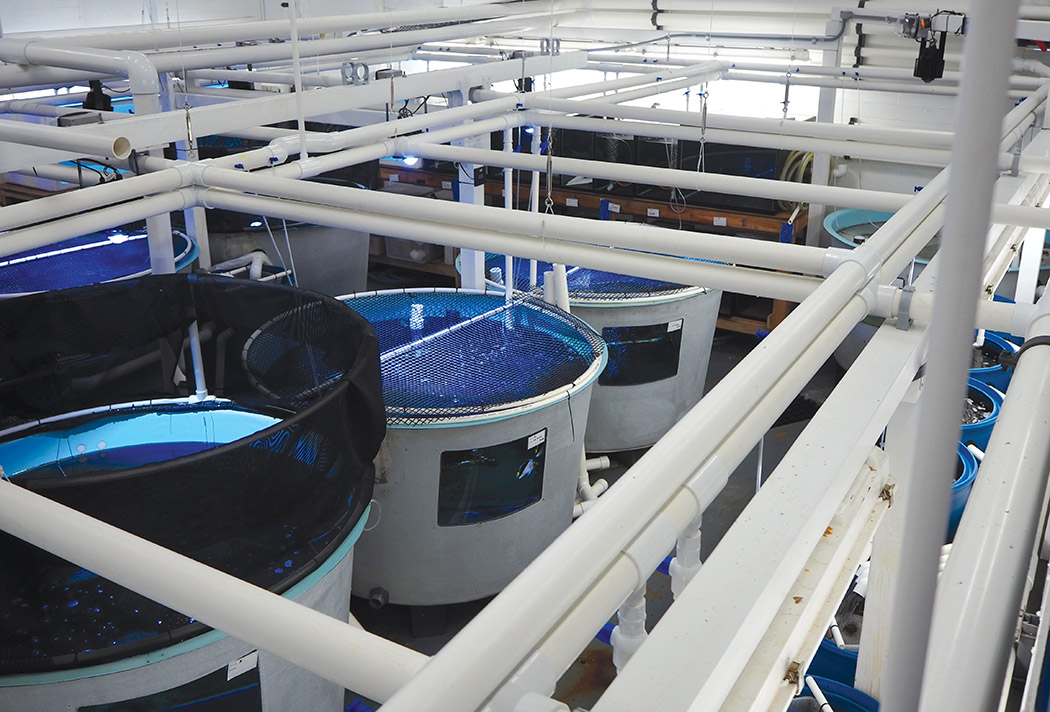
By Brittany P. Anderson
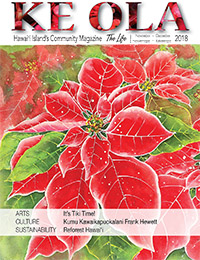
The constant low hum of bubbling water provides a soothing soundtrack to the work taking place at the Pacific Aquaculture and Coastal Resource Center in Hiloʻs harbor area, Keaukaha, on the east side of Hawai‘i Island. The remnants of an old wastewater treatment facility still punctuate the nine-acre property. A tall rusted cylindrical metal tank sits empty near the main office while two clarifiers, wide round tanks integral to the purification of sewage, are now repurposed for raising fish and oysters.
The mission of the Pacific Aquaculture and Coastal Resource Center (PACRC) is to advance long-term sustainable solutions and conservation of worldwide coastal areas through aquaculture and proper resource management. Grants fund much of their research, while some private companies partner with the center to test pilot programs that demonstrate their proposed aquaculture venture is feasible. The center is also a learning site for University of Hawai‘i at Hilo students working towards creating a sustainable future for Hawai‘i Island and the world.
The World is your Oyster
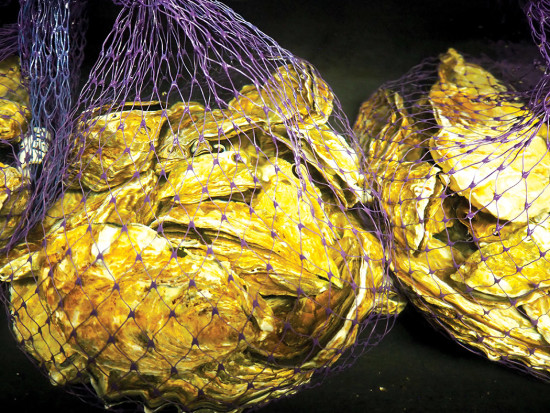
Aquaculture is the rearing of aquatic animals or the cultivation of aquatic plants for food, like a water-based farm or ranch. Hawai‘i Island would seem like the perfect place for aquaculture ventures with its expansive 266 miles of coastline; however, not so says Maria Haw, Director of PACRC and Associate Aquaculture Professor.
“Most of our coastlines don’t pass DOH [Department of Health] standards due to a number of reasons. We don’t have a lot of industrial contaminants, but we do have agricultural runoff and coliform, or fecal waste, in our waters.” She explains that because of the cesspool and the agriculture industry’s chemical runoff it became clear that edible shellfish could not be farmed along much of Hawai‘i Island’s coast.
There are also substantial permitting roadblocks, as much of the coastline falls within the Special Management Area (SMA), making shoreline activity heavily regulated. Any and all industry operating within the SMA must obtain a permit from the Hawai‘i County Planning Department, which is a lengthy process.
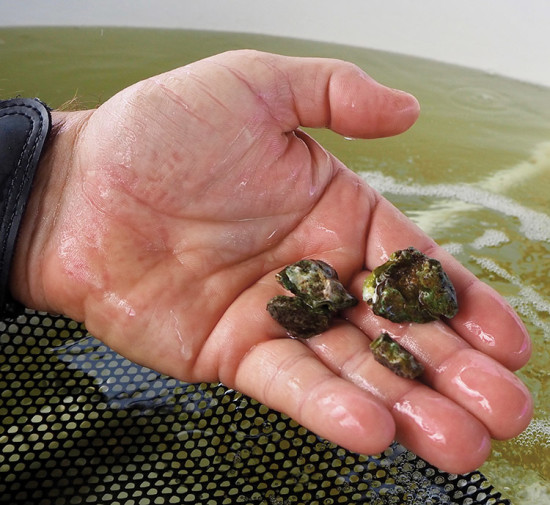
PACRC found that drilling a salt-water well is the best option for edible shellfish production on the east side of Hawai‘i Island. The water obtained through salt-water wells is naturally filtered by lava rock and soil allowing it to pass DOH testing requirements.
Visible from Kalaniana‘ole Avenue, one of the two towering white greenhouse structures house the oyster nursery at PACRC. Millions of juvenile oysters are cultivated in large blue tanks, their every stage calculated, monitored, and cataloged. The adorable mini-oysters look like small pebbles a child might tuck into their pocket.
PACRC spawns mostly Pacific oysters, raising them until they reach two millimeters then selling the oysters back to Pacific coast oyster farmers. Currently, there are five oyster hatcheries on Hawai‘i Island that supply the Pacific Coast with oyster seed. Millions of little oysters are shipped to Washington State, and then placed in farming beds along the coastline. Big names in oyster farming, like Goose Point Oysters, see Hawai‘i Island producers as stabilizing the industry, making it more sustainable and maintaining enough product to satisfy our appetites. “The student workforce sells the oyster babies and uses that money to fund their work,” Maria says.
There are also several tanks of native oysters that are exceptionally good at improving water clarity and quality. They are part of the first Waterkeeper project on Hawai‘i Island, led by O‘ahu Waterkeeper which aims to clean the waters around Pearl Harbor with these powerful molluscs. The small, one- to two-inch oysters can filter 50 to 100 gallons of water a day, straining out pollutants and depositing them below the ocean floor. The oyster program at PACRC includes pearl oysters and the native Hawaiian oysters as a method of cleaning our shores and ancient fishponds so they may once again be used to feed Hawai‘i communities.
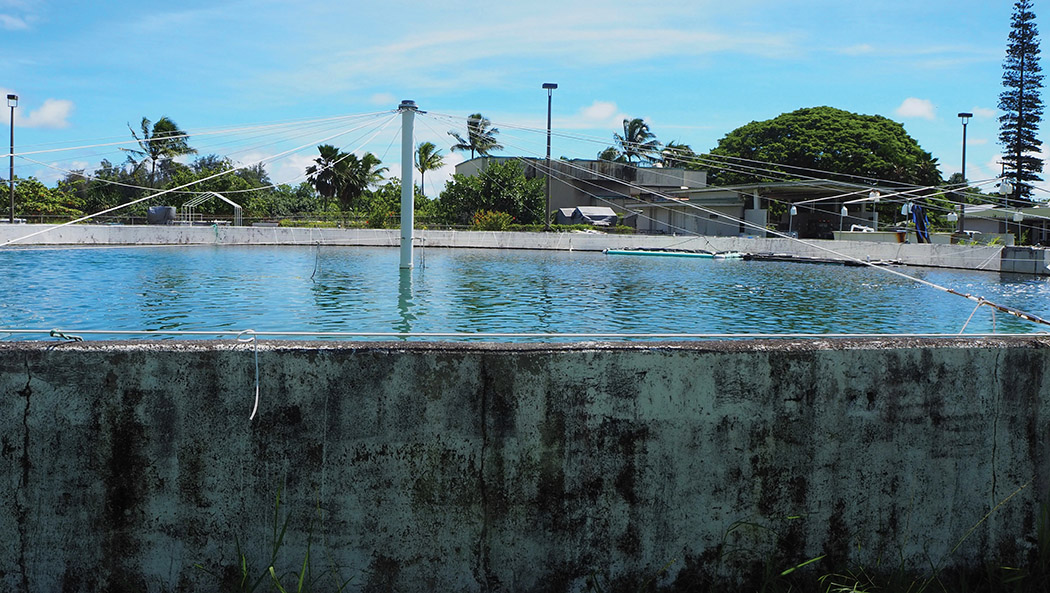
Not as Many Fish in the Sea
From the outside, the ornamental fish hatchery is an unassuming beige outbuilding, another artifact of the old treatment facility. Inside, are a series of cylindrical tanks and a maze of white piping that delivers water and nutrients to an array of tropical fish. The area is kept sterile, so viewing the operation is done from a metal scaffolded landing decorated with colorful posters detailing the species below.
The number of endemic reef fish in Hawai‘i include Potter’s Angelfish, Hawai‘i Longfin Anthias, and Flame Wrasse, which exist here in some of the highest concentration of numbers in the world. PACRC hopes that their efforts to spawn these four species along with several others, will help keep their numbers up and create a viable aquaculture business for Hawai‘i Island.

Potter’s Angelfish, prized for their striking color, are one of the most collected native aquarium fish. They live in deep reefs throughout the Hawaiian Islands; however, their numbers are threatened by habitat degradation like coral bleaching. Maria notes, “Ornamentals are difficult to raise in captivity,” however, it is far from impossible. An aquaculture venture could also take pressures off natural populations by growing and selling them wholesale to ornamental fish enthusiasts.
Maintaining a healthy ornamental fish population in Hawai‘i Island’s waters can be done by keeping habitats healthy and managing resources well. With the effects of climate change and environmental factors outside of our control, being able to raise ornamental fish in captivity provides an opportunity for a sustainable industry throughout the island chain.
Outside, moi (Polydactylus sexfilis), a‘hole‘hole (Kuhlia sandvicensis), and kahala (Seriola rivoliana) swim in their respective tanks draped with black shade cloth. The fish hatchery is currently undergoing expansion thanks to grants from the National Oceanic and Atmospheric Administration (NOAA) and Sea Grant which, in addition to Hawaii Fish Company, will be supporting the research. The overall goal is to create a viable fishery operation to help feed the Hawai‘i community with time-honored favorites.
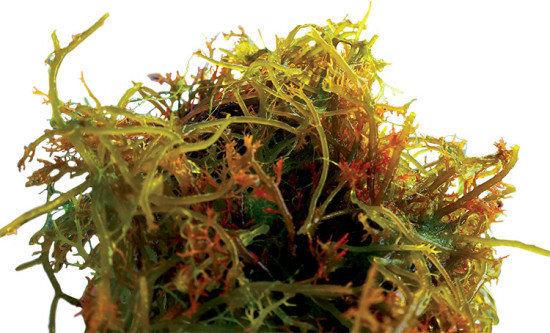
Edible limu, or seaweed, is another research effort championed at PACRC. Along with Dr. Karla McDermid of the Marine Science Department at the University of Hawaii at Hilo, the team at PACRC is working to develop limu propagation methods for both sustainable food production and conservation efforts. Over 60 species of limu were consumed by native Hawaiians though today roughly only three species are commonly sold with only one being native to the islands. Wild stocks of native limu that were once harvested along our shores are also diminishing. Research is aimed at finding viable farming methods for food production as well as the chance to transplant native species back into the wild.
On the other side of the property, in the repurposed clarifying tanks, another experiment is underway. Dull grey shadows swim just under the surface before darting out of sight. Here, fish of varying types are used to create algae blooms in the water which in turn feeds oysters suspended in hanging baskets along the edge of the tank. These large tanks are among the few shellfish growing areas classified as “Approved” by the Department of Health for oyster rearing because the water is so clean.
It isn’t just the oysters and fish working hard at the center; staff and University of Hawai‘i at Hilo students care for and study aquatic life with extraordinary precision.
All in a Day’s Work
In the makeshift laboratories fashioned out of old refrigeration containers, and under two giant greenhouses, there are great minds hard at work. “We have a partnership with the UH Sea Grant Program; we are one of a few places that have the distinction of being a Center of Excellence for Sustainable Aquaculture.” says Maria. They have also received National Sea Grant funding for pearl oyster farming in Hilo Bay.

Each year 20–30 students come through the center, “The hands-on experience supplements what they learn in the classroom. There are management-type positions some of the students come into so they really have a lot of experience before they graduate.” Maria explains.
Every position at the center is integral to the research being conducted, from making sure water temperatures are ideal to scrubbing oysters to induce spawning. There is a sense of fluid harmony and interdependence between students, marine life, and the research.
Current student, David Littrell, is an aquaculture technician. Full of knowledge, a life of experience, and with an Ironman® tattoo on his left heel, David guided me throughout the campus. Once a commercial diver for an offshore fishery in Kona, he is only a few classes away from graduation. “Finally, at 50 years old I know what I want to do,” he says with a smile, “It’s the best thing I’ve ever done.” David believes finding sustainable solutions for raising fish and shellfish is the answer Hawai‘i Island has been looking for in the drive to be more food secure. “We’re doing good for the world; instead of just taking and taking, we’re giving something back.”
Leaving the Pacific Aquaculture and Coastal Resource Center, there is a newfound appreciation for the scientists dedicated to conservation and food sustainability on Hawai‘i Island. With Hawai‘i importing approximately 90% of its food, now is the time to work towards creating local means for feeding our communities. The PACRC’s work goes well beyond our island chain, helping to make the world’s food sources and oceans stable for future generations. ❖
Photos by Brittany P. Anderson
For more information: pacrc.uhh.hawaii.edu/
Mahalo Jack’s Diving Locker – Ocean Story Sponsor

